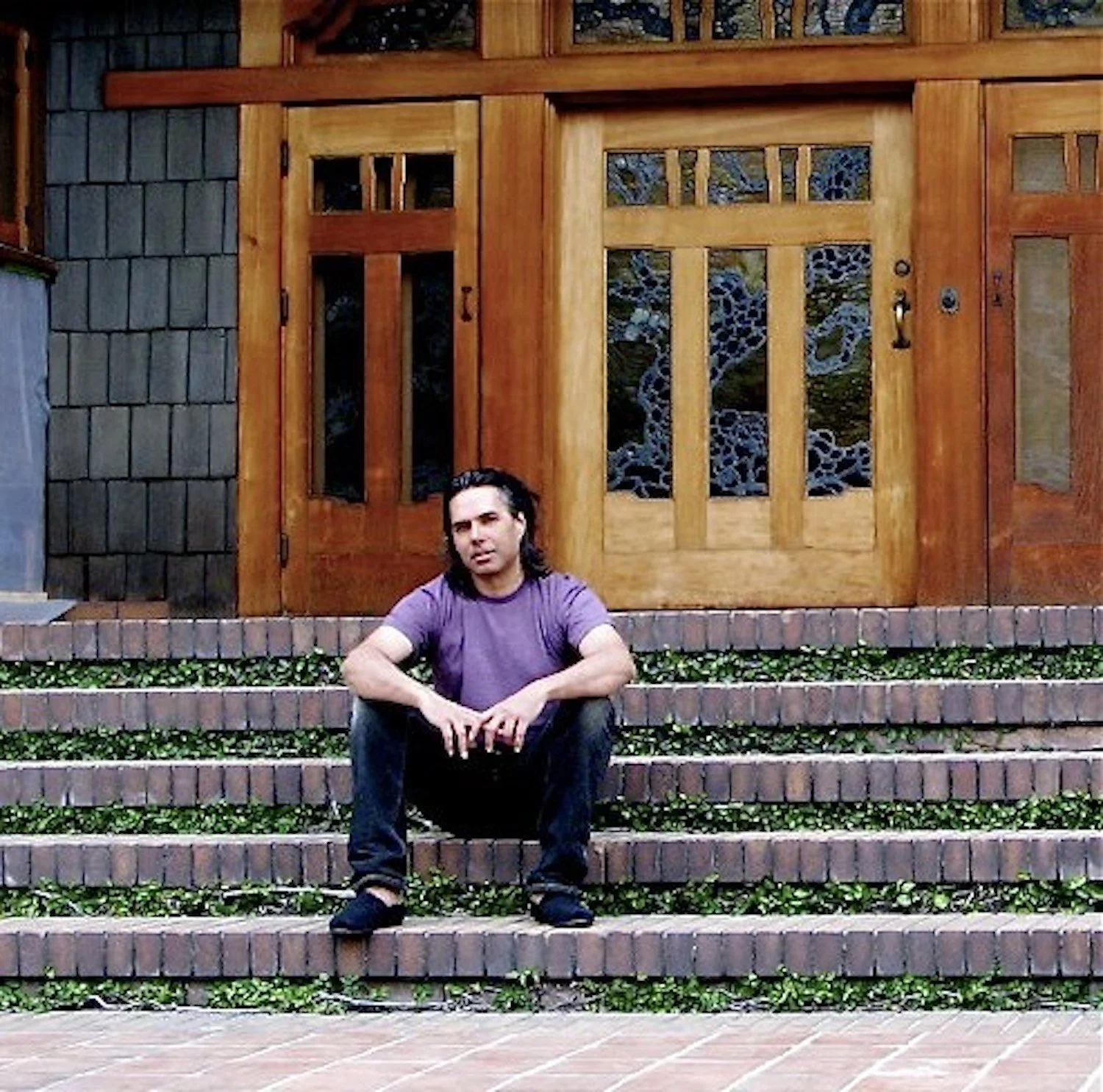Gamble House
On the steps of the Gamble House, Pasadena California in 2011
The Arts and Crafts movement was an influential phenomenon of the late 19th century in which Architects and designers attempted to re-establish the skills of craftsmanship threatened by mass production and industrialisation. Its main protagonist was the designer-cum-poet, William Morris who was inspired by writings of the art critic John Ruskin. In Ruskin’s essay on 'The Nature of Gothic' from his book 'The Stones of Venice' he combined praise of the Gothic architecture of northern Europe with a critique of 19th-century society, particularly the monotony of factory production and the deskilling of the individual worker which destroyed natural creativity. The solution lay in the medieval past and medieval architecture with its rich variety of ornament, embodying individual craft skills which were lost through the copying of standard forms. Morris sought to put Ruskin’s ideas into practice by reviving medieval standards and methods of making artefacts, being true to materials, traditional constructional methods and function to the essence of design. In 1861 he set up his company Morris Marshall Faulkner & Co to promote these ideals and produce objects of beauty incorporating the craft skills that had begun to be lost.
Architecture was also to be reformed through traditional building crafts, the use of local materials, and be free of imposed style. Function, need and simplicity without spurious ornament were to inform design, encapsulated in the work of Philip Webb, Richard Lethaby and Charles Voysey. Although Morris’s decorative work was rich, intricate and colourful he preferred plain and unadorned buildings. His favourite was Great Coxwell Barn which he described as "beautiful as a cathedral."
The movement declined in England after 1900 but was influential in Europe, mainly in Germany through the publication of Hermann Muthesius’s 'Das Englische Haus' and the creation of the Deutscher Werkbund (1907). It is also seen in the United States with the work of Frank Lloyd Wright (a founder member of the Chicago Arts and Crafts Society) and certain key buildings in the USA. Amongst the most interesting exponents of the Arts and Crafts style in the US were Greene and Greene, architects of the Gamble House in Pasadena, California, built for the Gambles, as in Proctor & Gamble, pharmacists.
The Gamble house is notable for all the key attributes of any Arts & Crafts building, such as Clarity of form and structure, variety of Materials, Asymmetry, Traditional construction and Craftmanship.

